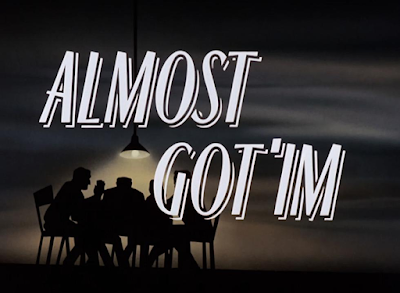In the same way that Clayface's original appearance in the series was a step below the episodes that had come before it, his second (and last) appearance, Mudslide, is also a step down from the three previous episodes that we've seen. As I mentioned before, the character that can shapeshift to be anyone makes for some complex stories that aren't easily adapted to a series that's supposed to be a collection of one-offs. If BTAS had appeared in the modern format of television, where one is expected to start at the beginning and follow the story through to the end, characters like Clayface become much more viable, since their subtleties can be woven into each plot and their threat grows from background details to the headlining event. Without that amount of time and attention, you end up with "monster that forms morning stars from his hands and tries to kill the hero" which is fine as a bog-standard superhero adventure... but it's still a bog-standard superhero adventure and we've seen many of those over the years (and decades.) This was, of course, episode #52, which means one episode a week for a year which is a great deal more than any series produces these days and it's difficult to maintain the quality of something like The Man Who Killed Batman with a schedule that crowded and you could see writers Alan Burnett and Steve Perry reaching for all kinds of angles to make it work. In fact, Bruce Timm mentioned later that the reason Clayface wasn't used more than twice in the whole run was that a) he was too expensive to animate and b) he was too difficult a character to develop a good story around. They only ended up doing this sequel because of fan demand.
As mentioned in Feat of Clay, there were some elements that kind of fused the realities of Clayface II and Clayface III. That was even more the case in this episode, as Matt Hagen (Ron Perlman) is facing the reality that the latter experienced, in which he was falling apart (melting) and needed a specially-designed suit (in III's case, an exoskeleton) in order to keep from disintegrating. In this episode, we also included the constant creation of mass (aka the Incredible Hulk puzzle), as Clayface flings segments of his body around to disable a guard, presumably by suffocation, and leaves other portions behind, but apparently doesn't suffer any ill effects from doing so. After attempting a robbery (somehow, the career actor has also developed safecracking skills), he retreats to yet another cliffside laboratory, which is definitely one of the most popular styles of home in Gotham City, given their regular appearance. After asking Alfred to assist in research to track down the melting man, our hero suddenly realizes that examining Hagen's film career is the answer, which kinda makes one wonder why that wasn't the first analysis. This is reinforced by the writers' decision to drop references to that film career throughout the script, such that the scientist helping Hagen is one Stella Bates (Pat Musick.) Not only does Clayface do the Stella! scene from A Streetcar Named Desire but The Batman also mentions that Dr. Bates used to own a motel that she sold to finance the research to save Hagen. This is on top of Clayface suddenly making movie puns with every other line ("You've upstaged me for the last time-!" "Time to bring down the curtain!") The fact that Clayface in his special skin that keeps him from collapsing also makes him resemble an Oscar statuette is just one more reference that was really overworked to try to make this episode work. Which it mostly didn't.
The final action scene was somewhat horrifying, as Clayface tries to absorb and contain The Batman until the latter suffocated, saying that he could "hear his heartbeat slowing", which is almost more gruesome than anything the first three Clayfaces did (although III turning people to protoplasm is still probably worse.) There's actual tension there for a few seconds, but then it all kind of (ahem) falls apart and we end up with an unusual ending, in that there are no words from our hero, as he's shown simply escorting Dr. Bates(!) back inside as our camera heads for the storm-filled sky. Thankfully, this episode ended up airing as #63, as if the first season had ended on this note, there might've been some questions about its return. But, as it is, we'll be moving on to the next in production order which was, in fact, the final episode of season 1 to be aired.
















































